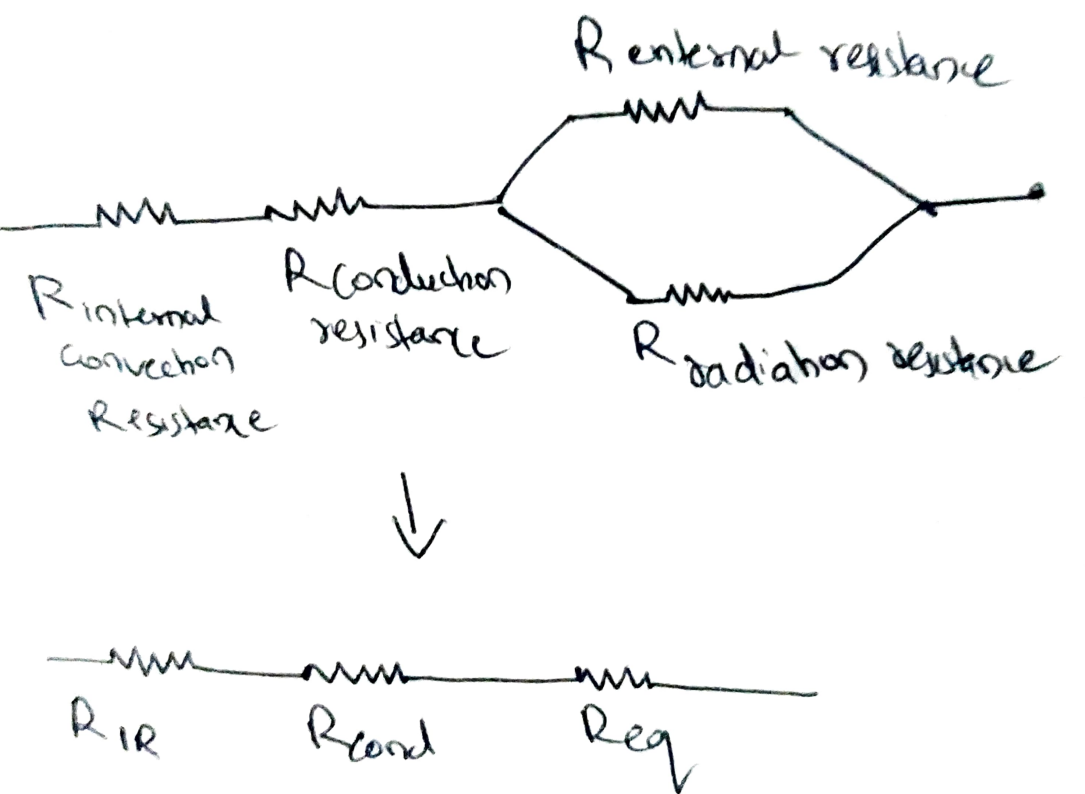QUESTION-) 236 °C steam flows in a pipe which features are given below. Inner and outer diameters of pipe are 300 mm and 320 mm. Coefficient of heat transmission is 40 W/mK. It's external ambient is air and it's temperature is 20 °C. Take the temperature of the pipe's external surface 180 °C. It is known that the internal temp convection coefficient is 600 W/m^2K and external heat transfer coefficient is 5,9109 W/m^2K The pipe's length is 500 meter. You need to add the radiation in the calculation. The rate of the radiation emissivity is 0.85. You can take the environmental surface temp directly. a-) Please draw this question on the resistance network. b-) Please calculate the heat loss of pipe. c-) By applying insulation to this pipe, it is desired to reduce the heat loss to 20% of the uninsulated loss (option a). Calculate the insulation thickness accordingly. Take glass wool as insulation material.(Conductivity of glass wool = 0.040 W/mK.)
QUESTION-)
236 °C steam flows in a pipe which features are given below. Inner and outer diameters of pipe are 300 mm and 320 mm. Coefficient of heat transmission is 40 W/mK. It's external ambient is air and it's temperature is 20 °C. Take the temperature of the pipe's external surface 180 °C. It is known that the internal temp convection coefficient is 600 W/m^2K and external heat transfer coefficient is 5,9109 W/m^2K The pipe's length is 500 meter. You need to add the radiation in the calculation. The rate of the radiation emissivity is 0.85. You can take the environmental surface temp directly.
a-) Please draw this question on the resistance network.
b-) Please calculate the heat loss of pipe.
c-) By applying insulation to this pipe, it is desired to reduce the heat loss to 20% of the uninsulated loss (option a). Calculate the insulation thickness accordingly. Take glass wool as insulation material.(Conductivity of glass wool = 0.040 W/mK.)
Given,
The temperature of steam inside the pipe, Ti=236 °C=236+273.15K =509.15 K
The inner diameter of the pipe, di=300 mm=0.3 m
The outer diameter of the pipe, do=320 mm=0.32 m
The conductivity of the pipe, k=40 W/m.K
The convective coefficient at the inner surface, hi=600 W/m2.K
The convective coefficient at the outer surface, ho=5,9109 W/m2.K
The temperature at the pipe's outer surface, T°=180 °C=180+273.15=453.15 K
The ambient temperature, Ta=20 °C=20+273.15=293.15 K
The conductivity of the insulation material, kins=0.040 W/m.K
The radiation emissivity is, ε=0.85
The length of the pipe, L=500 m
The inner radius of the pipe, ri=di2=0.15 m
The outer radius of the pipe, ro=do2=0.16 m
a)
Outer surface area (A0)= = 502.65m2
Inner surface area (Ai)==471.2388m2
Internal convective resistance Rir=
Conduction resistance Rcond=
Outer convective resistance Ror=
To radiative heat transfer coefficient (hr), we equate,
Therefore Radiative resistance (Rr)=
We can draw the resistance diagram as shown below

To find Req,
Therefore Req=3.370
Total Resistance
b)
To find heat loss,
Use formula,
Step by step
Solved in 3 steps with 1 images


